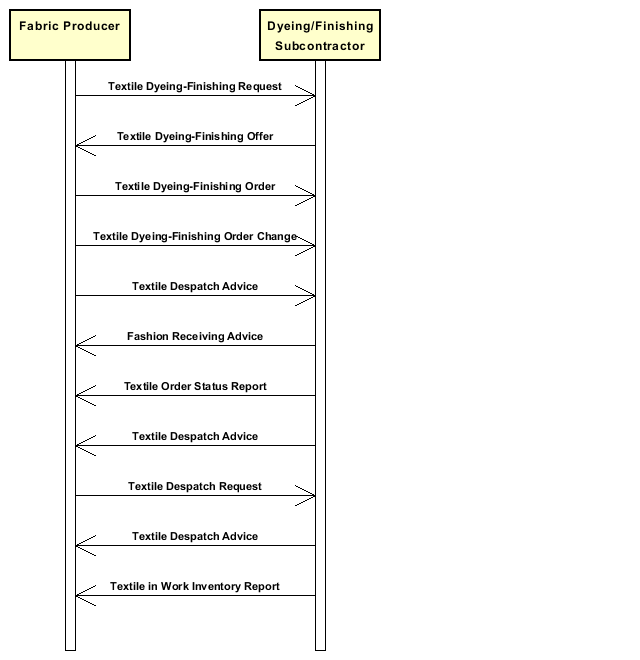XML structures of eBIZ/TC Upstream documents (2018-1)
release 5/11/2018
| Document Textile Dyeing-Finishing Order | ||
|---|---|---|
| Document |
Textile Dyeing-Finishing Order (Updated) | |
| Description | Dyeing-finishing Order commissioned to a Subcontractor (contains the parameters and the sequence of the operations to be performed) | |
| Release date | 05/11/2018 | |
| Scope |
The present guide has been issued to assist the companies of the Textile-Clothing sector in the implementation of the standard XML document type “TEXTILE DYEING-FINISHING ORDER”, providing all the instruction required for its use in the context of e-commerce between Fabric Producers and their Subcontractors shown in the enclosed diagram.
All the rules required for the construction and validation of the document are embedded into the specific XML-Schema, which is detailed in section "Implementation guide".
| |
| Generalities |
The Textile Dyeing-Finishing Order is issued when a Contractor commits to a Subcontractor a work required to transform a fabric material into something usable for apparel production. This work Order can include one or several operations of the fabric manufacturing cycle specifying their sequence.
| |
| Credits | This XML document has been realized with the support of TQR Consortium by Guido Cucchiara, PROGEMA - Gruppo SOI, supported by Thomas Imolesi and Arianna Brutti, XML-Lab (initiative of ENEA and Forum per la Tecnologia dell'Informazione). Other participants: Gustavo Cametti (Lanificio Piacenza), Massimo Perona (Domina srl), Piero De Sabbata e Piergiorgio Censoni (ENEA) Subsequent developments in this document have been financed by the eBIZ 4.0 project More information can be acquired in http://www.ebiz.enea.it. | |
| Best practice | Textile Dyeing-Finishing Order can be used instead of Textile Printing Order when printing is associated to finishing operations and these are prevalent. | |
| Back compatibility | Updated | |
| Document Code | G017 | |
| Diagrams |
+ 
| |
| Resources |
[Guide] [XML Schema] [XML] [XSL] [XML+XSL] [Compare version] | |
| Used in Processes |
|
|